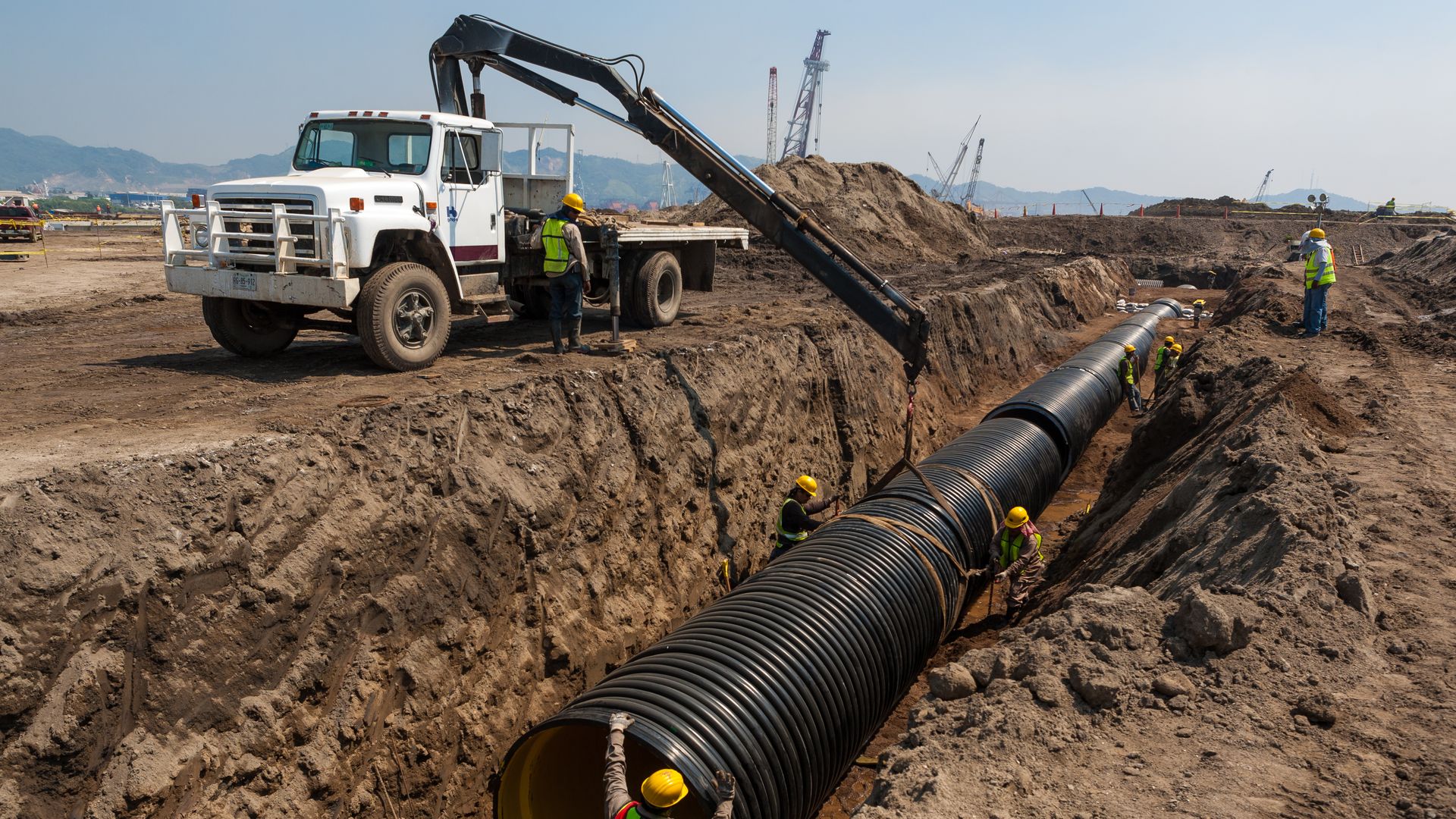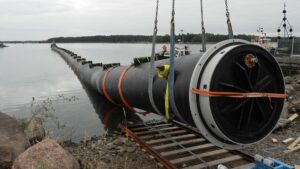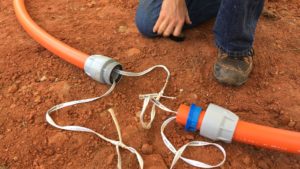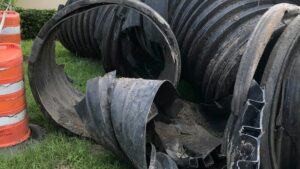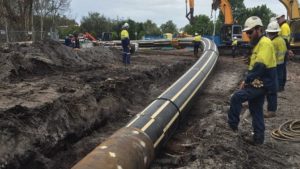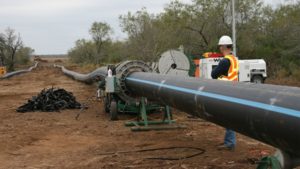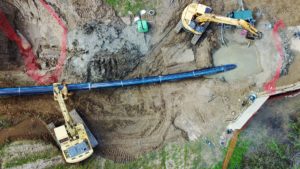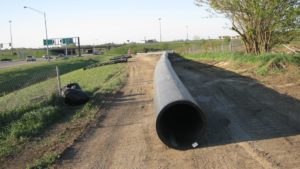Corrugated high-density polyethylene and polypropylene pipes, herein called Corrugated Polyolefin Pipe (CPP), are ideal for use in a wide range of buried applications. This article discusses proper techniques for CPP installations, which includes unloading through final backfilling.
Each step of the process is described for standard drainage installations so that the engineer or contractor can be confident of achieving a sound installation that will last for the intended design life. Many of the recommendations in this article are based on the ASTM D2321 “Standard Practice for Underground Installation of Thermoplastic Pipe for Sewers and Other Gravity-Flow Applications”.
Small pipes are defined as those having diameters up to and including 18 in. (45 cm), while large pipes have greater than 8 in. (45 cm) diameters. The PPI member companies have used these procedures successfully in a variety of situations for several decades.
Information is also included that covers unique applications and special situations. CPP is versatile and can sometimes be used in ways that other pipe materials could not, such as in more specialized installations.
Unloading, Handling and Site Storage
This section addresses proper receiving, handling, and site storage of the pipe to preserve its original integrity. These activities are important first steps in producing a reliable installation.
Inspection
Once the pipe is received on the job site and prior to final acceptance, an inspection should be completed to ensure all products are correct, accounted for, and undamaged. The shipment should be compared with project requirements. CPP should be marked with the product name and/or manufacturer, nominal size, and applicable specification(s).
Unloading and Storing
Prior to unloading the pipe, a designated area on the jobsite should be reserved for the storage of pipe materials. The area should be flat and free of debris and hazards, including large rocks, construction material, and harmful chemicals. The storage area should also be located far enough away from construction traffic in order to avoid potential contact.
CPP is shipped in a variety of forms (i.e., coils, individual lengths (sticks), bundled lengths, and palletized lengths) and unloading methods will vary. Light compact pieces can be moved by hand
but generally this applies for 18-in. (45-cm) diameter and smaller pipe sizes.
However, heavy or bulky CPP including large coils of single wall pipe generally require equipment, such as a forklift, loader, backhoe, or crane. If a sling or cable is used, it should be attached to the pipe in a manner that minimizes bending. Coiled pipe can be unloaded using equipment with a sling or strap looped through the center of the coil.
Individual lengths of loose pipe can be unloaded by carefully rolling the pipe onto a forklift or loader and then lowering the pipe to the ground. Alternatively, a nylon sling or cable can be used to lift at the one-third points.
In order to avoid damage to CPP, bare chains or metal cables should not be used. Single sticks of small pipe can be carried by hand while taking care to avoid dragging the pipe ends. Bundled lengths will require equipment and a sling or strap at the one-third points of the bundle.
Palletized pipe can be unloaded using a forklift or other equipment in combination with a sling or cable wrapped around the pallet. Manufacturers may provide additional unloading guidance specific to the products and packaging methods used on a particular shipment. Read Full PDF

